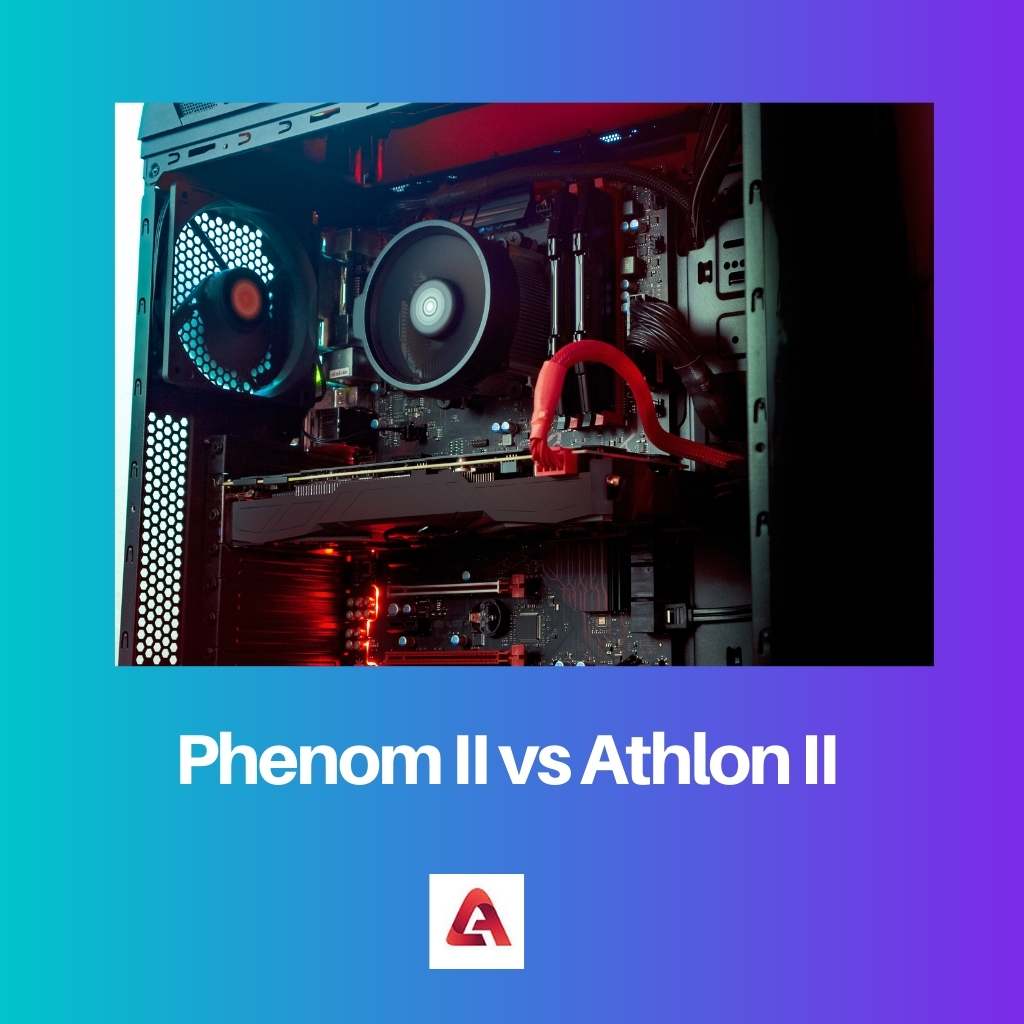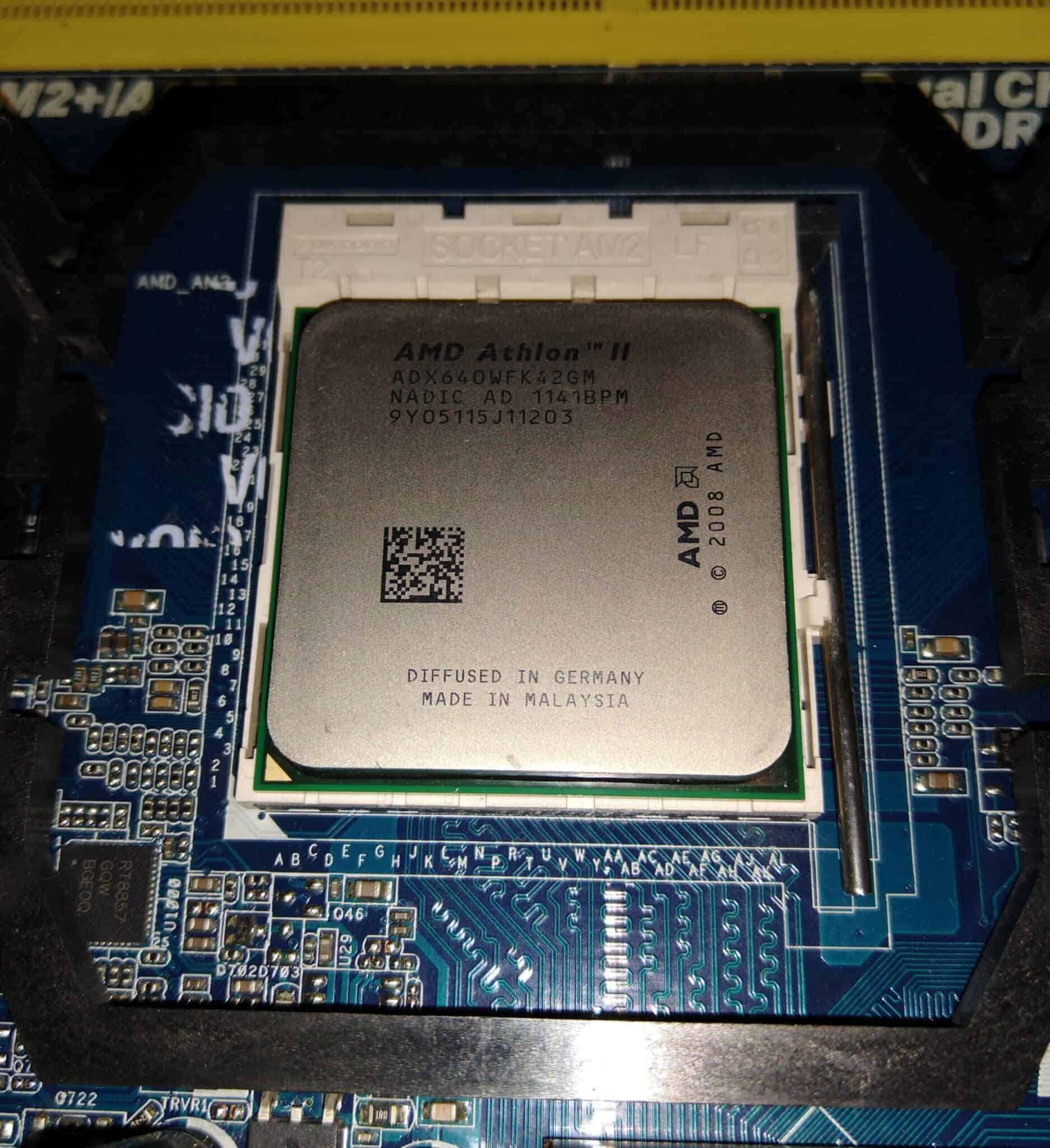The abbreviation for Advanced Micro Devices is AMD. It is an American multinational company based in California.
It develops computer processors and technologies related to consumer and business markets.
AMD brought two of the popular processors in the market, namely Phenom and Athlon. The new versions are also launched as Phenom II and Athlon II.
Both versions are far better compared to the original ones. There are distinctions between the two that this article can clear up.
Key Takeaways
- Phenom II processors have more cache memory than Athlon II processors, resulting in higher performance.
- Athlon II processors offer better energy efficiency than Phenom II processors, making them suitable for budget-conscious consumers.
- Phenom II processors support advanced technologies, such as HyperTransport 3.0 and integrated memory controllers, offering superior multitasking capabilities.
Phenom II vs Athlon II
The Athlon II series is based on the K10 microarchitecture. It was designed for mid-range and budget desktops and features dual-core and quad-core processors with clock speeds ranging from 2.2 GHz to 3.4 GHz. The Phenom II series is more suitable for demanding applications such as gaming and multimedia editing.

The Phenom II processor was introduced by AMD and brought the company back into contention with the space of £125-190.
Compared to first-generation Phenom, Phenom II is higher in clock speed and sports more cache. Two new flavours of chips are available: AM2+ (support for DDR2 memory) and AM3 (support for DDR2/ DDR3 memory).
The central processing units have one of the family members, namely Athlon II. in June 2009, the K-10-based Regor was launched, a dual-core version of the Athlon II.
This was followed by a series of versions such as Sargas (single-core), Propus (quad-core), Rana (triple-core), and the Llano.
Comparison Table
| Parameters of Comparison | Phenom II | Athlon II |
|---|---|---|
| Launched | 2008 | 2009 |
| Min. feature size | 45nm | 45nm to 32nm |
| L3 Cache | Have | Do not have |
| Clockspeed | High | Low |
| Power consumption | More | Less |
What is Phenom II?
AMD has one of the family members, namely, Phenom II. It uses the 45nm multi-core processor with the microarchitecture of the AMD K10. Phenom is the predecessor of Phenom II, whereas FX is the successor.
In December 2008, the socket AM2+ was released, a version of Phenom II by Advanced Micro Devices.
On February 9, 2009, the Socket AM3 version was launched with the support of DDR3, along with a batch of quad and triple-core processors.
Socket F+ is required in a dual-processor system for the Quad FX platform. On April 27, 2010, the next generation was released, namely Phenom II X6.
The instruction set mainly comprises MMX, SSE4a, SSE 3, SSE 2, SSE, x86-64, x86, and AMD-V.
The Phenom II X4 version operates as the processor component of the Dragon Platform of AMD. It also includes graphics of the Radeon HD 4800 series and the 790 series chipset.
In the Leo Platform, the CPU is the Thuban Phenom II X6 and includes the graphics of the Radeon HD 5800 series and the AMD 890 chipset.
The shared L3 cache size is tripled from 2MB to 6MB, leading to a benchmark performance gain of 30%. The processor has cool ‘n’ quite as a whole rather than focusing on a per-core basis.
When it comes to motherboards, Phenom II does not work with all types of motherboards.

What is Athlon II?
Athlon II belongs to a family of AMD and central processing units of multi-core 45nm. It aims at the mid-range market budget and also has a lineup of complementary products to the Phenom II.
Athlon II is derived from the series of Phenom II and is based on the architecture of AMD K10.
There are mainly two principal Athlon II dies like Regor (dual-core) with 1MB per core and Propus (four-core) with 512 KB per core.
The design of Regor is a native dual-core with lower TDP. However, it does not consist of L3 Cache as its Phenom siblings comprise.
The Athlon II x2 200e –220 chips support less L2 cache compared to the rest of the Regor line. The Rana comprises of triple-core and derived from the quad-core design, namely Propus, with one core disabled.
The core names of the variants of Athlon II consist of Regor, Rana, Llano, Sargas, and Propus.
In some cases, disabled L3 cache and cores are used in Phenom II Deneb die.
It mainly includes AMD Wide Floating Points Accelerator, AMD Direct Connect Architecture, AMD Digital Media XPress 2.0 Technology, Hyper Transport Technology, and AMD PowerNow! Technology.

Main Differences Between Phenom II and Athlon II
- The processors of Phenom II come with four cores. On the flip side, Athlon II does not comprise any disabled cores, and that’s why it comes with a tri-core design.
- When it comes to motherboards, Phenom II does not work with all types of motherboards. But Athlon II supports all types of motherboards.
- The core names of the variants of Phenom II are Zosam (X4), Heka (X3), Thuban (X6), Propus (X4 840 and 850), Deneb (X4), and Callisto (X2), while Athlon II consists of Regor, Rana, Llano, Sargas, and Propus.
- In terms of the instruction set, Phenom II comprises MMX, SSE4a, SSE 3, SSE 2, SSE, x86-64, x86, and AMD-V, whereas Athlon II consists of only x86-64.
- Phenom II has a maximum CPU clock rate of 2.4 GHz to 3.7 GHz. On the other hand, Athlon II has 1.6 GHz to 3.5 GHz as its maximum CPU clock rate.




